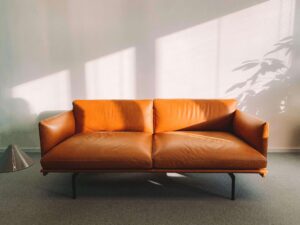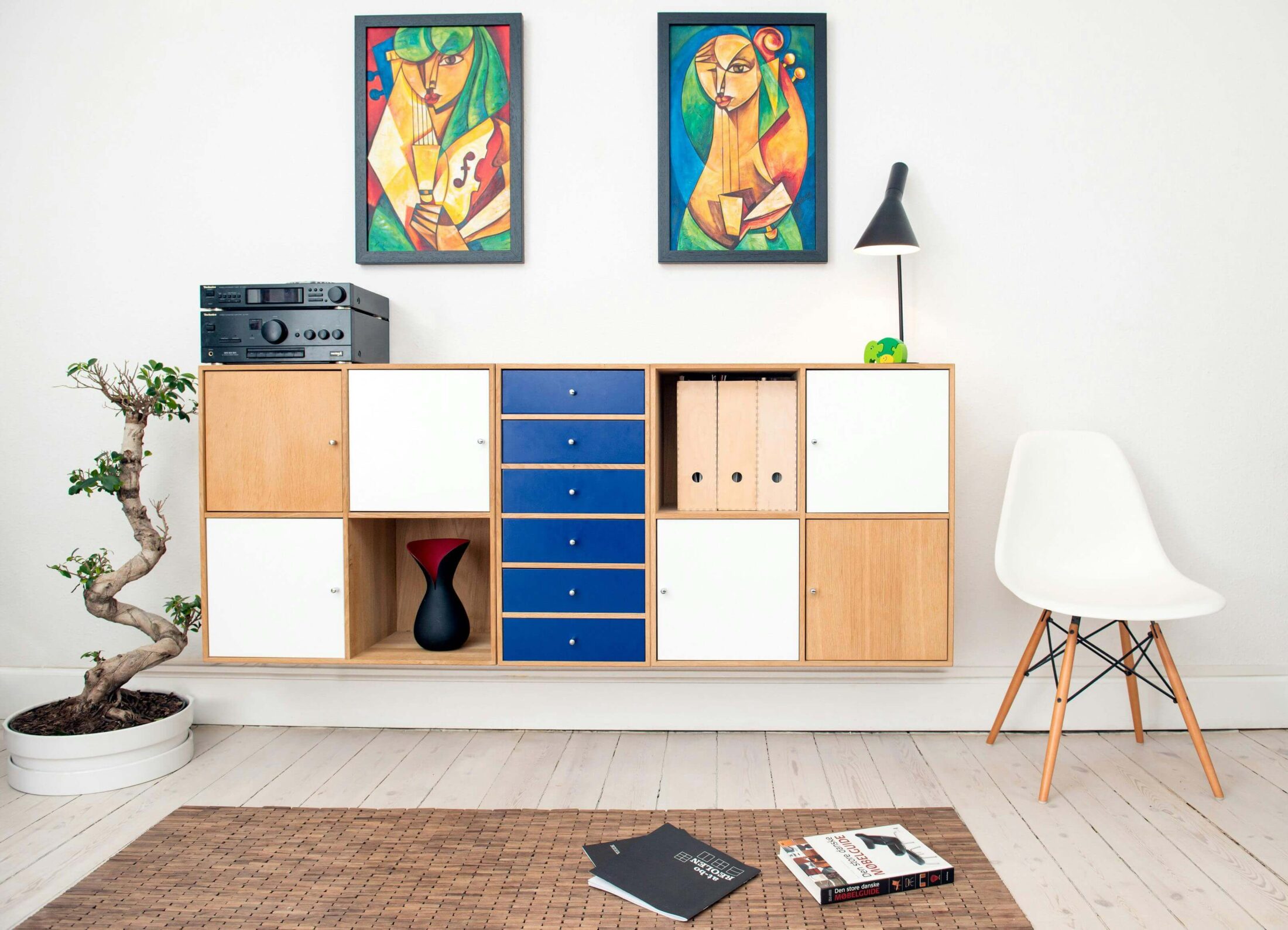Cultivating a Sustainable and Stylish Home




The world of interior design is constantly evolving, and one trend that’s gaining significant traction is vegan furniture. But what exactly is vegan furniture, and is it the right choice for your home? This comprehensive guide delves into the key factors that influence vegan furniture, exploring the benefits, potential drawbacks, and a variety of exciting material options. By the end, you’ll be well-equipped to make informed decisions about incorporating plant-based furniture into your sustainable and stylish living space.
The Allure of Vegan Furniture
Vegan furniture extends far beyond simply replacing leather with another material. It embodies a holistic philosophy that prioritizes both cruelty-free practices and eco-friendly materials. Here’s a closer look at the core principles that make vegan furniture a compelling choice for many homeowners:
- Ethical Living: For those who prioritize a cruelty-free lifestyle, vegan furniture offers peace of mind. The production process excludes animal-derived materials, ensuring no harm comes to animals.
- Sustainable Materials: Vegan furniture often utilizes eco-friendly materials like reclaimed wood, bamboo, cork, and recycled plastics. This approach reduces reliance on virgin resources and promotes a circular economy, where materials are reused and given a new lease on life.
- Durability and Innovation: The days of flimsy “alternatives” are long gone. Vegan furniture manufacturers are constantly innovating, creating high-quality and long-lasting pieces that rival traditional furniture in terms of strength, aesthetics, and functionality.
- Style for Every Home: The beauty of vegan furniture lies in its remarkable diversity. From minimalist and modern to rustic and bohemian, there’s a plant-based option to suit any decor style. You can create a personalized haven that reflects your unique taste and commitment to sustainability.
Understanding Trade-offs in Vegan Furniture
While the benefits of vegan furniture are undeniable, it’s important to consider potential trade-offs before making the switch. Here are some key factors to keep in mind:
- Material Performance: Different vegan materials offer varying properties. For example, recycled plastics might not provide the same level of breathability as traditional leather. Research different materials to find the best fit for your needs. Consider the intended use of the furniture and choose a material that offers the desired level of comfort and durability.
- Durability Comparison: While advancements are being made constantly, some vegan materials may require more care or have a shorter lifespan compared to certain traditional hardwoods. Reclaimed wood, for instance, might have imperfections or require more maintenance than commercially produced wood. Understanding the characteristics of each material will help you make informed decisions about which pieces are best suited for high-traffic areas versus occasional use.
- Initial Investment: Depending on the chosen material and craftsmanship, vegan furniture can sometimes carry a higher price tag than its conventional counterparts. However, the long-term sustainability benefits and potential for finding unique, handcrafted pieces can be worthwhile considerations. Consider the overall value proposition and weigh the initial investment against the expected lifespan and environmental impact.
A World of Possibilities: Exploring Vegan Furniture Materials
The vegan furniture movement offers a treasure trove of exciting materials, allowing you to create a beautiful and sustainable home. Let’s explore some popular options and their unique characteristics:
- Reclaimed Wood: The rustic charm and inherent story embedded in each piece make reclaimed wood a fantastic choice for tables, chairs, and statement bookcases. However, reclaimed wood pieces may require more upkeep compared to manufactured wood options.
- Bamboo: This fast-growing and renewable resource offers a sustainable alternative to traditional hardwoods. Bamboo furniture is known for its clean lines and modern aesthetic, but it might not be suitable for very high-traffic areas.
- Cork: Versatile and surprisingly durable, cork can be used for everything from flooring and countertops to stylish ottomans and accent pieces. Cork is naturally fire-resistant and hypoallergenic, but it might not be the best choice for furniture exposed to direct sunlight for extended periods.
- Recycled Plastics: Innovation at its finest! Recycled plastic furniture offers a sustainable way to repurpose waste materials while creating sleek and modern pieces. However, the aesthetic might not suit every design preference.
Sustainable Practices for Your Vegan Home
Choosing vegan furniture is just the first step in creating a truly sustainable and stylish home. Here are some additional tips to consider:
- Shop Local: Look for local artisans and furniture makers who create vegan pieces using sustainable practices. This reduces the carbon footprint associated with transportation and supports your local community.
- Invest in Quality: Opt for well-made furniture, regardless of material, that will last for years. Consider reupholstering existing pieces with vegan leather alternatives to extend their lifespan and give them a fresh new look.
- Embrace Second-Hand Finds: Thrift stores and vintage shops can be treasure troves for unique furniture. With a little TLC, you can transform pre-loved
Cultivating Comfort: Caring for Your Vegan Furniture
Just like any other furniture, vegan pieces require proper care to maintain their beauty and functionality. Here are some tips for keeping your plant-based furniture looking its best:
- Cleaning and Maintenance: Research the specific cleaning requirements for each material. Some materials, like reclaimed wood, might require special oils or waxes to preserve their luster. Recycled plastic furniture might be more susceptible to scratches, so opt for gentle cleaning methods.
- Sunlight Savvy: Direct sunlight can be detrimental to some materials, such as cork. Consider placing furniture strategically to avoid prolonged sun exposure, especially for lighter-colored pieces.
- Spills and Stains: Act quickly! Address spills and stains promptly to prevent permanent damage. Use appropriate cleaning solutions based on the specific material to avoid discoloration or weakening the fibers.


Frequently Asked Questions: Demystifying Vegan Furniture
Here are some frequently asked questions to address any lingering concerns you might have about vegan furniture:
- Is vegan furniture comfortable? Absolutely! Many vegan materials offer exceptional comfort. Plush recycled cotton cushions or responsibly sourced wool upholstery can be just as comfortable as traditional materials.
- How long does vegan furniture last? The longevity of vegan furniture depends on the material and care practices. Well-made vegan furniture, with proper maintenance, can last for many years.
- Where can I find vegan furniture? The options are expanding! You can find vegan furniture online from eco-conscious retailers, at local furniture stores that carry sustainable lines, or even from talented local artisans.
The Final Bloom: Cultivating a Sustainable and Stylish Space
Vegan furniture isn’t just about trends; it’s about making conscious choices for a kinder and greener future. By incorporating these plant-based wonders into your home, you’re not only creating a stylish space that reflects your values but also minimizing your environmental impact. Remember, the key lies in understanding the trade-offs, considering your lifestyle and budget, and exploring the vast array of materials and design possibilities. So, embrace the world of vegan furniture, cultivate a sustainable and stylish home, and enjoy the comfort and beauty of plant-based living!
Let us know in the comments below! Have you made the switch to vegan furniture? What are your favorite finds or tips?



